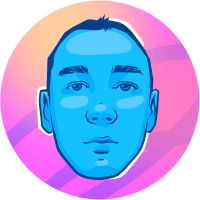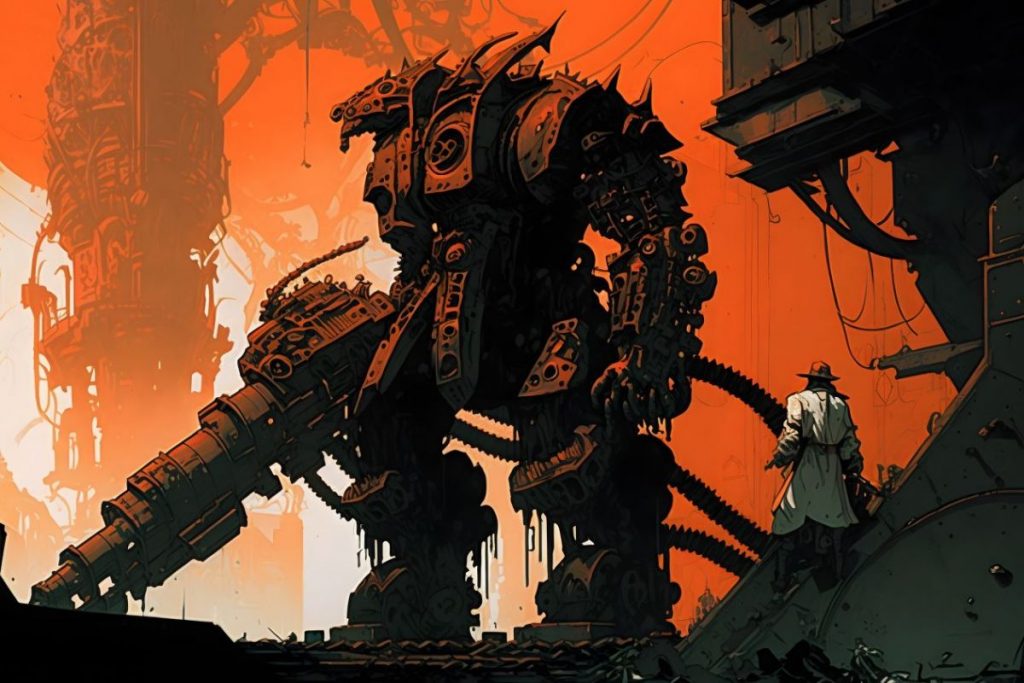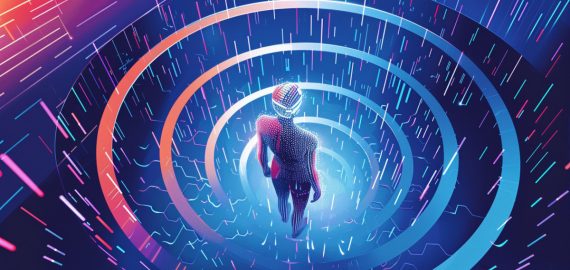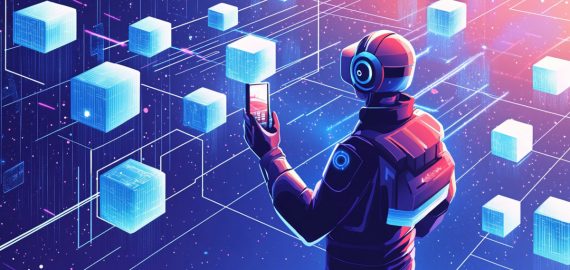ChatGPT Learns to Control Drones and Robots as It Ponders Next-Generation AI


In Brief
One of the most notable features of ChatGPT is its ability to control drones and robots by itself.
The purpose of this study is to see if ChatGPT can think beyond text and consider the physical world to assist with robotics tasks.
The main challenge here is teaching ChatGPT to solve problems while taking into account physical laws, the context of the operating environment, and how the robot’s physical actions can change the state of the world.
Since it was first introduced, ChatGPT has constantly been gaining popularity among users who want to control drones and robots. This is because ChatGPT is equipped with advanced features that allow it to control these devices with ease. It also allows users to interact with their drones and robots in natural language, as well as modify existing commands or program new ones.

One of the most notable features of ChatGPT is its ability to control drones and robots by itself. This is made possible by the integration of libraries from OpenAI and drone interfaces. With this, the bot is able to instruct the device to fly up to a mirror, take a selfie, create the Microsoft logo out of cubes, and perform a number of other complex tasks. This level of autonomy is unprecedented and sets the bot apart from its competitors
ChatGPT is a language model that has been trained on a massive corpus of text and human interactions to generate coherent and grammatically correct responses to a variety of prompts and questions. Microsoft looked into whether ChatGPT could think beyond text and start considering how its actions can affect the physical world so that it could assist humans with robotics tasks.
A team of researchers carried out a study with the aim of facilitating easier interactions with robots so that users don’t have to learn complex programming languages or know details about robotic systems. The team was faced with the challenge of teaching ChatGPT to solve problems while taking into account physical laws, the context of the operating environment, and how the robot’s physical actions can change the state of the world.
ChatGPT can do a lot on its own, but it still requires assistance. The technical paper entitled “ChatGPT for Robotics: Design Principles and Model Abilities” describes a set of design principles that can be used to help language models solve robotics tasks. These principles include special prompting structures, high-level APIs, and human feedback via text. Developers believe this work is just the beginning of a paradigm shift in how robotics systems are developed and hope to inspire other researchers to join in this exciting field.

Microsoft experts advise anyone who will use these features to carefully monitor their work; language models sometimes tend to generate incorrect signals. Let’s hope that the developers of drone control systems will take this advice. It is essential that the developers of drone control systems, in particular, pay close attention to the accuracy of their language models, as errors can have dire consequences.
- ChatGPT absorbs new ways to solve complex tasks. AI still makes mistakes when answering questions that require knowledge of units of measurement, complex calculations, and current knowledge of recent events. To get more accurate and detailed answers, Stephen Wolfram suggested combining ChatGPT and Wolfram Alpha. GPT pooling and Wolfram Alpha can provide a powerful combination of linguistic intelligence, understanding, and natural language processing. ChatGPT-LangChain, developed by IBM’s James Weaver, combines Alpha and GPT 3.5 to enable an ideal AI assistant to switch between human text generation and non-human computational tasks with a natural language command.
- ChatGPT has surpassed 100 million MAUs in two months, a record in the history of user applications. It has surpassed the popularity of all previous user applications and is a paid application with a subscription-based model. Microsoft Corporation is considering a $10 billion investment in a digital company, which would be one of the largest ever made in a digital company. ChatGPT intends to maintain its momentum in the coming months with new features and integrations.
Read more about ChatGPT:
Disclaimer
In line with the Trust Project guidelines, please note that the information provided on this page is not intended to be and should not be interpreted as legal, tax, investment, financial, or any other form of advice. It is important to only invest what you can afford to lose and to seek independent financial advice if you have any doubts. For further information, we suggest referring to the terms and conditions as well as the help and support pages provided by the issuer or advertiser. MetaversePost is committed to accurate, unbiased reporting, but market conditions are subject to change without notice.
About The Author
Damir is the team leader, product manager, and editor at Metaverse Post, covering topics such as AI/ML, AGI, LLMs, Metaverse, and Web3-related fields. His articles attract a massive audience of over a million users every month. He appears to be an expert with 10 years of experience in SEO and digital marketing. Damir has been mentioned in Mashable, Wired, Cointelegraph, The New Yorker, Inside.com, Entrepreneur, BeInCrypto, and other publications. He travels between the UAE, Turkey, Russia, and the CIS as a digital nomad. Damir earned a bachelor's degree in physics, which he believes has given him the critical thinking skills needed to be successful in the ever-changing landscape of the internet.
More articles

Damir is the team leader, product manager, and editor at Metaverse Post, covering topics such as AI/ML, AGI, LLMs, Metaverse, and Web3-related fields. His articles attract a massive audience of over a million users every month. He appears to be an expert with 10 years of experience in SEO and digital marketing. Damir has been mentioned in Mashable, Wired, Cointelegraph, The New Yorker, Inside.com, Entrepreneur, BeInCrypto, and other publications. He travels between the UAE, Turkey, Russia, and the CIS as a digital nomad. Damir earned a bachelor's degree in physics, which he believes has given him the critical thinking skills needed to be successful in the ever-changing landscape of the internet.


















































